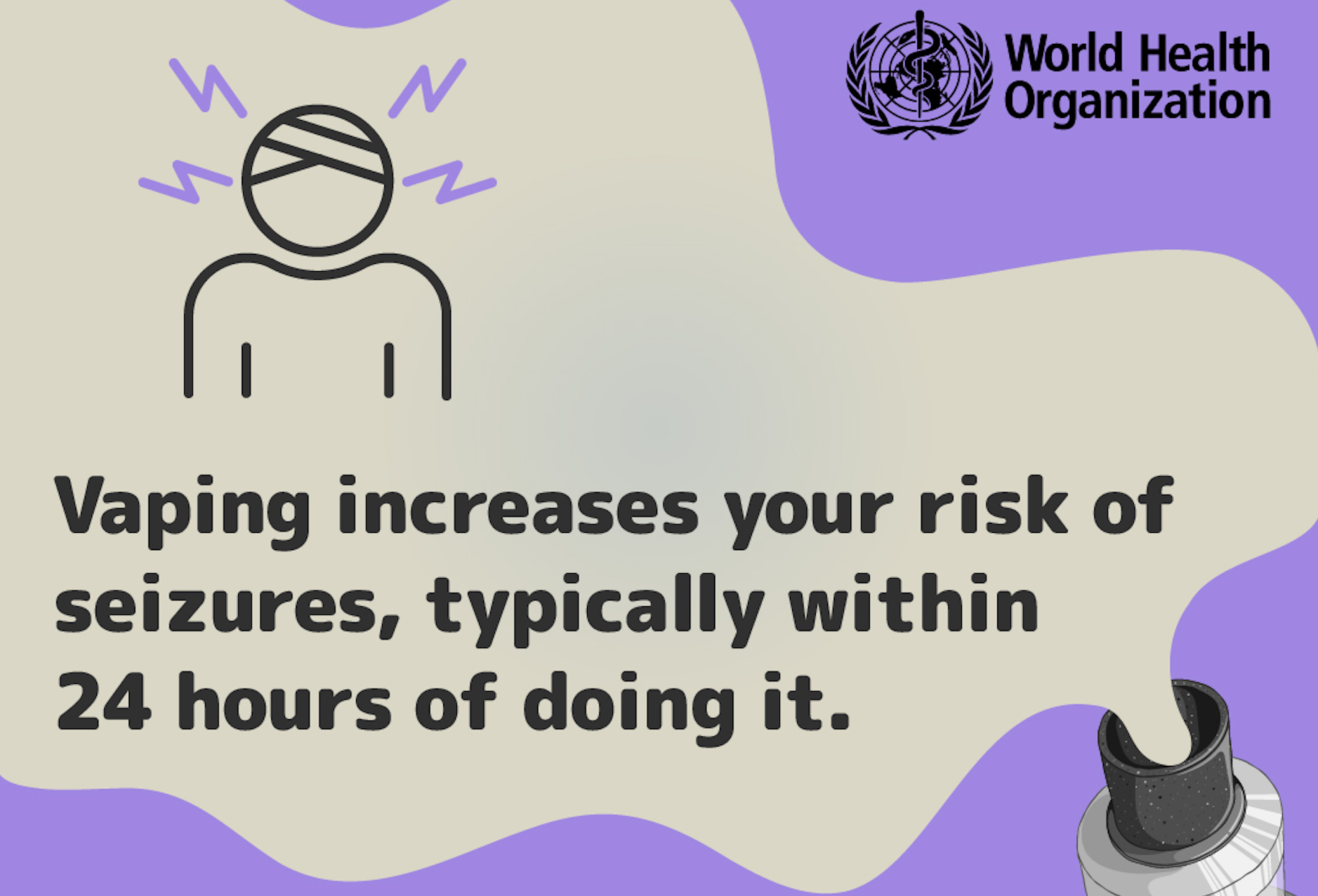The World Health Organization should no longer be considered a leading authority in global health. For years now, it has been responsible for a steady stream of misinformation—particularly, though not only, regarding safer alternatives to smoking tobacco. This seems to be accelerating. And now, the WHO has hit a new low.
On April 8, the WHO posted a tweet that declared: “Vaping increases your risk of seizures, typically within 24 hours of doing it. Don’t let #vaping harm your health.”
The tweet cited no evidence. By publication time, it had over 300,000 views. And although it received a community note on X about 12 hours after it was posted—”This post is based on inconclusive evidence utilizing studies that have not been peer reviewed”—the seizure tweet had already been viewed about 92,000 times before that happened.
The WHO has not responded to any of the many replies objecting to its tweet, which remains online at publication time. Its harmful misinformation is spreading fast.
Vaping increases your risk of seizures, typically within 24 hours of doing it.
Don’t let #vaping harm your health. pic.twitter.com/am1A7RxaXl
— World Health Organization (WHO) (@WHO) April 8, 2024
The sources of the WHO’s claims are easy to find. In 2019, a special announcement by the United States Food and Drug Administration alerted the public to people self-reporting seizures after vaping. Some of the reports pertained to people known to have already had seizures from other causes; to people who had underlying medical conditions; or to people who were simultaneously using drugs other than nicotine.
None of these reports proved that vaping nicotine was the cause of a seizure. They just indicated that someone experienced a seizure sometime after vaping.
In 2020, a paper published in the Journal of Adolescent Health (JAH) examined the 114 reports of seizures after vaping that were submitted to the FDA. It deemed that 79 of the reports contained enough information to warrant further analysis.
Among those, the onset of seizure varied: from shortly after taking one puff, to following weeks of use. Several of the reports did indicate that the seizure occurred within 24 hours of vaping, though most did not indicate the brand, nicotine strength or source of the vaped product. And of the reports involving youth and young adults, 43 percent indicated concurrent use of medications known to cause seizures.
Renowned nicotine expert Neil Benowitz, MD, wrote an editorial about the JAH paper. He looked at biological plausibility, the timing of events and any alternative explanations for these incidents. While cautioning about youth vaping uptake, he wrote, “I would not consider seizures to be a potential adverse effect that should influence the decision of an adult smoker to use e-cigarettes to try to stop smoking conventional cigarettes.”
“If nicotine e-cigarette use was a cause of seizures, an association between smoking and seizures would also be expected—none has been reported.”
It isn’t only the WHO and the FDA, however. In 2022, the CEO of the Australian National Health and Medical Research Council (NHMRC) issued a statement about vapes which read, in part: “Although not common, there is high certainty of evidence from case reports, surveillance reports and case studies that e-cigarette use can lead to seizures.”
One source was cited to validate that claim: a “systematic review of the global evidence,” conducted by the Australian National University that year. The bulk of that review indicated that many of the cited seizures were not caused by the act of vaping but by an overdose of nicotine—far more than could ever be consumed through vaping—ingested in situations that included suicide attempts.
The review stated: “In the context where no other cause of seizure is apparent, they are considered appropriate evidence for our conclusions. Hence: There is conclusive evidence that the use of e-cigarettes is related to seizures.” (My emphasis.)
The review also stated: “The lack of epidemiological evidence means that the incidence and quantitative risk of seizures in e-cigarette users are not known. However, based on the apparent frequency of events from the US, they would appear to be rare. Hence: There is no available quantitative evidence as to the relative risk and incidence of seizures related to the use of e-cigarettes.” (My emphasis.)
In 2023, an international group of tobacco control experts critiqued the NHMRC statement. They wrote:
“A small number of case studies have reported seizures in people using nicotine e-cigarettes, but these cases do not establish causation and hence do not qualify as ‘high-certainty’ evidence. Many of these cases had a pre-existing seizure disorder, and some had used other drugs. If nicotine e-cigarette use was a cause of seizures, an association between cigarette smoking and seizures would also be expected—but none has been reported.”
Tobacco harm reduction expert Clive Bates, director of Counterfactual Consulting, helped put the number of self-reported seizures in perspective. “In the US, 1.2 percent of the adult population (CDC) has epilepsy and 4.5 percent vape (NHIS),” he pointed out. “Assuming a US adult population of 260 million and that these two populations have no common risk factors, the random overlap would be 140,000 people who both vape and are vulnerable to seizures in the United States.”
“I can’t find simple data on seizure frequency,” Bates said of individuals in this group, “but let’s assume it averaged just once per year; then there would be one vaper having a seizure approximately every 4 minutes, day in and day out—and that’s without any causal link or common risk factor necessary. Or, if symptoms were successfully suppressed with medication in 60 percent of cases and the seizure rate was one per year per person, that would still be one seizure every 10 minutes in the vaping population. Many would be ‘within minutes’ of vaping, again just by chance.”
The world needs a World Health Organization that tells the truth.
For what it’s worth, there are also documented cases of nicotine mitigating seizures for people living with autosomal dominant sleep-related hypermotor epilepsy (ADSHE) and autosomal dominant nocturnal frontal lobe epilepsy (ADNFLE). The nicotine patch has been used successfully to help people, including children, when anti-seizure medications did not relieve their symptoms.
The WHO’s own list of essential medicines includes nicotine replacement therapy products. It also includes bupropion and varenicline to help people stop smoking; these medications have, in very rare cases, been associated with seizures, yet they remain on the WHO’s list, without the organization issuing any high-profile warnings.
The WHO has once again ignored the balance of evidence in order to pursue its well established anti-vape agenda. It also posted outright falsehoods about vaping in January and March. It is frightening to think how many people who smoke around the world do not consider safer alternatives as a direct result of the WHO’s “infodemic,” to use the organization’s own term for the spreading of misinformation.
The WHO has lost its way when it comes to minimizing the harm caused by combustible tobacco, even though it supports harm reduction practices for other substances. Its unbalanced focus on youth and nicotine dependence is contributing to millions of people suffering from smoking-related diseases and premature deaths. It defies belief that the supposed leading authority on global health should be doing this. The world needs a World Health Organization that tells the truth.
Top image via the World Health Organization




